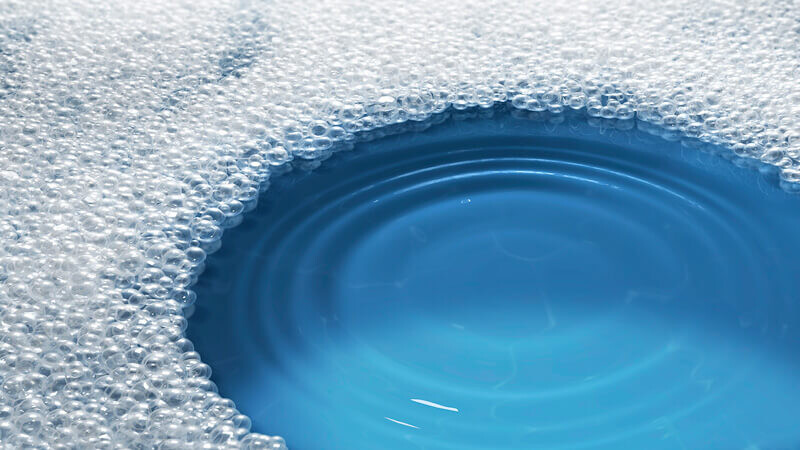The Role of Defoamers in Enhancing Product Quality and Performance
In different making processes, the existence of foam can considerably impede product high quality and functional performance. Defoamers act as vital ingredients that minimize this problem, making certain smoother manufacturing operations while boosting the useful and visual attributes of the final items (defoamers). Their application spans a wide variety of industries, from food and beverage to drugs, where uniformity and dependability are extremely important. The choice of the suitable defoamer can be vital to accomplishing ideal outcomes, raising essential questions regarding formulation compatibility and efficiency metrics that warrant further expedition.
Understanding Defoamers
Understanding the role of defoamers is essential for keeping product quality across various sectors. Defoamers are chemical ingredients designed to reduce and protect against the formation of foam in liquid systems, which can detrimentally affect processes such as blending, filling up, and surface tension. Foaming can lead to ineffectiveness, product defects, and endangered visual appeal, making defoamers an essential part in making procedures.
In commercial applications, defoamers help to enhance item consistency and stability. The effective use of defoamers not only makes sure smoother production processes however additionally adds to superior product performance.
Moreover, the choice and solution of a defoamer need to straighten with certain application requirements, such as compatibility with other ingredients, performance under varying temperature and pH conditions, and potential regulative restrictions. Ultimately, understanding defoamers' functions and their relevance in various formulations is important for optimizing manufacturing and making certain the best quality final result.
Sorts Of Defoamers
Defoamers can be classified into several types based upon their make-up and system of activity. The main types consist of silicone-based, non-silicone organic, and inorganic defoamers.
Silicone-based defoamers are among one of the most reliable, mainly because of their capacity to spread out promptly on the fluid surface area and interrupt foam formation. Their unique chemical structure enables superior stability, making them ideal for high-temperature applications and environments with varying pH degrees.
Non-silicone organic defoamers, frequently made up of natural oils or fatty acids, are valued for their biodegradability and lower toxicity. These are usually utilized in food and drink applications where safety and security and environmental influence are vital.
Inorganic defoamers, that include compounds like talc or calcium carbonate, act by increasing the thickness of the liquid, therefore reducing foam stability. They are commonly made use of in commercial procedures where compatibility with other materials is not a concern.
Each type of defoamer has unique benefits and constraints, enabling for tailored solutions depending upon the specific frothing concerns encountered in different applications. Recognizing these differences is important for maximizing efficiency and attaining preferred product quality.
Applications Across Industries
Countless sectors utilize defoamers to enhance item quality and functional effectiveness. In the food and drink industry, defoamers are important in processes such as brewing and dairy manufacturing to avoid foam formation, which can result in ineffectiveness and product inconsistency. By managing foam, suppliers can make sure much better return and an extra uniform item.
In the pharmaceutical market, defoamers play an essential function in the solution of liquid medicines, where excessive foam can impede blending and exact dosing. Their usage assists preserve the stability of the formulations and helps with smoother production processes.
The paint and finishes market additionally relies upon defoamers to improve the performance of items throughout application. By minimizing foam, these additives make sure a smoother coating and boost the visual qualities of the end product.

Benefits of Making Use Of Defoamers
While the application of defoamers varies across industries, their advantages regularly enhance product high quality and procedure efficiency. One significant advantage is the decrease of foam formation throughout making procedures, which can or else bring about manufacturing delays and disparities in product quality. By reducing foam, defoamers make it possible for a smoother circulation of products, promoting a lot more efficient procedures explanation and reducing the probability of equipment malfunctions.
In addition, making use of defoamers can enhance the look and appearance of end products. In fields such as coverings, paints, and food processing, extreme foam can compromise the visual aesthetics and overall high quality, while the appropriate defoamer application guarantees an uniform surface and preferable qualities. Defoamers can add to cost savings by reducing waste throughout manufacturing and optimizing the usage of raw products.

Selecting the Right Defoamer
Picking the best defoamer is essential for optimizing production procedures and making certain product quality. The selection of defoamer affects not just the performance of foam control yet additionally the overall performance features of the end product. Aspects to think about include the kind of application, the chemistry of the formulation, and the ecological problems under which the product will certainly be made use of.
Different sectors may call for specific defoamer types, such as silicone-based, organic, or polymeric defoamers. Understanding the compatibility of the defoamer with the key active ingredients is necessary to stay clear of negative responses that could endanger product honesty. In addition, the defoamer's performance in numerous temperature levels and pH levels need to be assessed to make certain regular performance.
Evaluating the defoamer in small-scale applications can offer useful insights into its performance and suitability. Consideration of governing conformity, especially in food, drugs, and cosmetics, is vital in selecting a defoamer. Eventually, a comprehensive analysis of these variables will lead to the option of a defoamer that not only regulates foam successfully yet additionally This Site enhances the quality and performance of the last item.
Final Thought

In conclusion, defoamers are necessary ingredients that dramatically enhance product quality and efficiency throughout various sectors. The critical selection and application of defoamers lead to set you back savings, optimized resource use, and raised customer fulfillment.
Frothing can lead to ineffectiveness, product defects, and jeopardized aesthetic appeal, making defoamers a crucial element in making operations.
